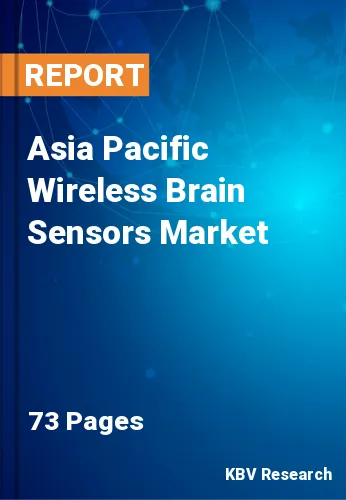The Asia Pacific Wireless Brain Sensors Market would witness market growth of 14.4% CAGR during the forecast period (2020-2026). In the Asia Pacific, the market for wireless brain sensors is foreseen to observe a significant development rate during the forecast period. The presence of a large target population and high unfulfilled requirements, concerning minimally invasive procedures, is anticipated to present huge development possibilities for the leading players working in the market for wireless brain sensors. Besides, an expansion in the number of clinical trials and high investments in R&D by global market players, due to the low-cost services in the region are some of the leading drivers of the market for wireless brain sensors.
An expansion in the number of road accidents, government activities, and advancements in the clinical development structure of emerging economies are some other components supporting market development in this region. Notwithstanding, the low adoption of advanced healthcare facilities, the absence of skilled professionals, and poor healthcare reimbursement facilities in a few of the nations in this region is probably going to hamper the development of the market for wireless brain sensors.
As per the Ministry of Road Transport and Highways, Government of India, in 2016, around 494,624 individuals were injured in road accidents. The number of harmed patients from road accidents has expanded by 25.6% from 2007 to 2017. In the year 2016, the number of road accidents reported by states was Uttar Pradesh (25,096), Tamil Nadu (82,163), Maharashtra (35,884), and Karnataka (54,556) respectively. This is foreseen to boost the development of the market for wireless brain sensors over the forecast period. Hence, expanding frequencies of road accidents and falls are anticipated to propel the development of the market for wireless brain sensors during the forecast period.
Based on End Use, the market is segmented into Multispecialty hospitals, Research institutes and Others. Based on Product, the market is segmented into Electroencephalography (EEG) Devices, Sleep Monitoring Devices, Intracranial Pressure (ICP) Monitors, Transcranial Doppler (TCD) Devices and Others. Based on Application, the market is segmented into Traumatic Brain Injuries, Parkinson's Disease, Epilepsy, Dementia and Others. Based on countries, the market is segmented into China, Japan, India, South Korea, Singapore, Malaysia, and Rest of Asia Pacific.
Free Valuable Insights: Wireless Brain Sensors Market in Asia Pacific is expected to register a CAGR of 14.4% during the forecast period (2020-2026)
The market research report covers theanalysis of key stake holders of the market. Key companies profiled in the report include Novo Nordisk A/S, Koninklijke Philips N.V., Natus Medical Incorporated, Neuroelectrics, Brain Products GmbH, NeuroSky, Inc., Advanced Brain Monitoring, Inc., Hangzhou Zhongheng Electric Co., Ltd., Neuronetrix Solutions, LLC and EMOTIV, Inc.
Market Segmentation:
By End-Use
By Product
By Application
By Country
Companies Profiled
Our team of dedicated experts can provide you with attractive expansion opportunities for your business.

